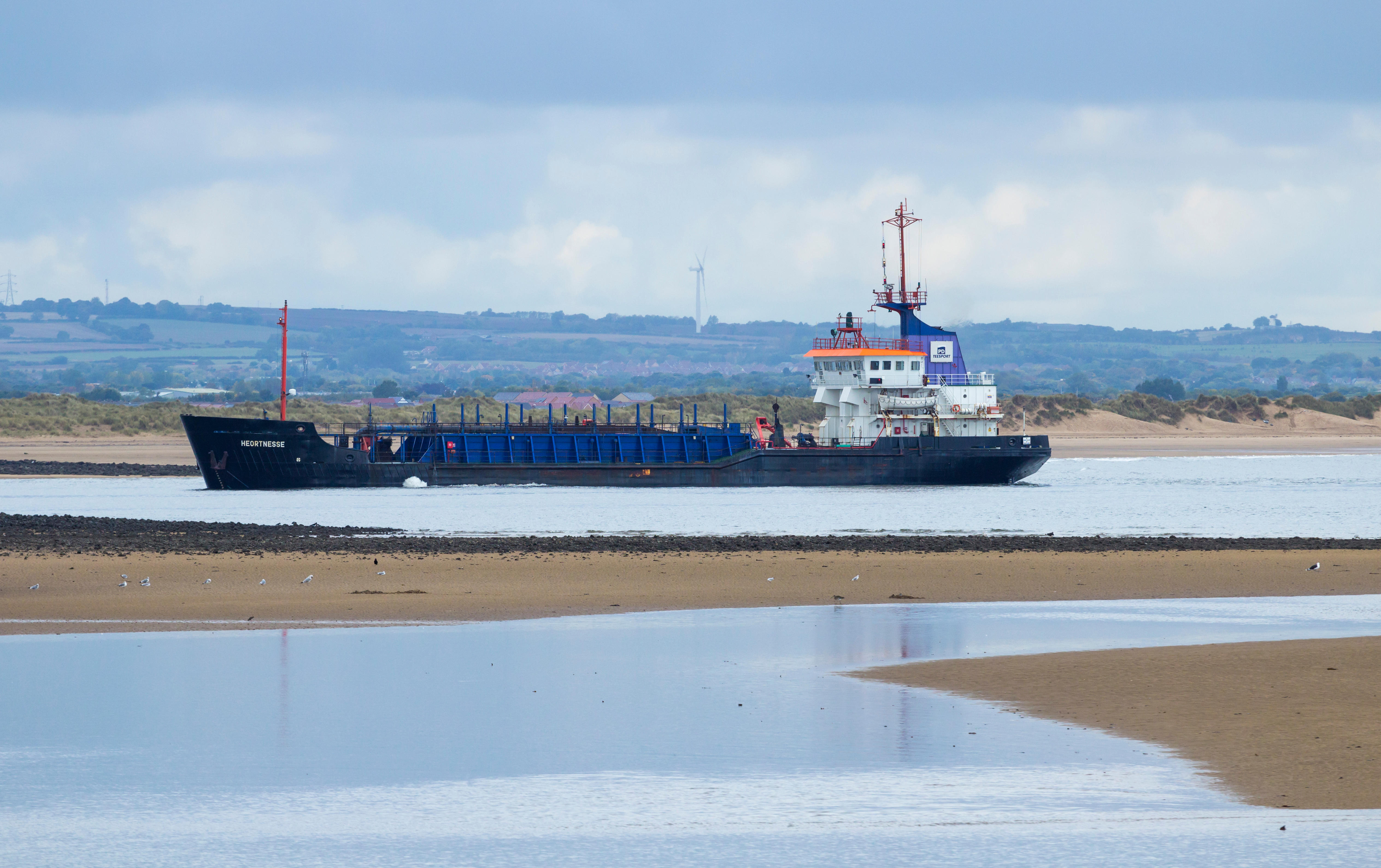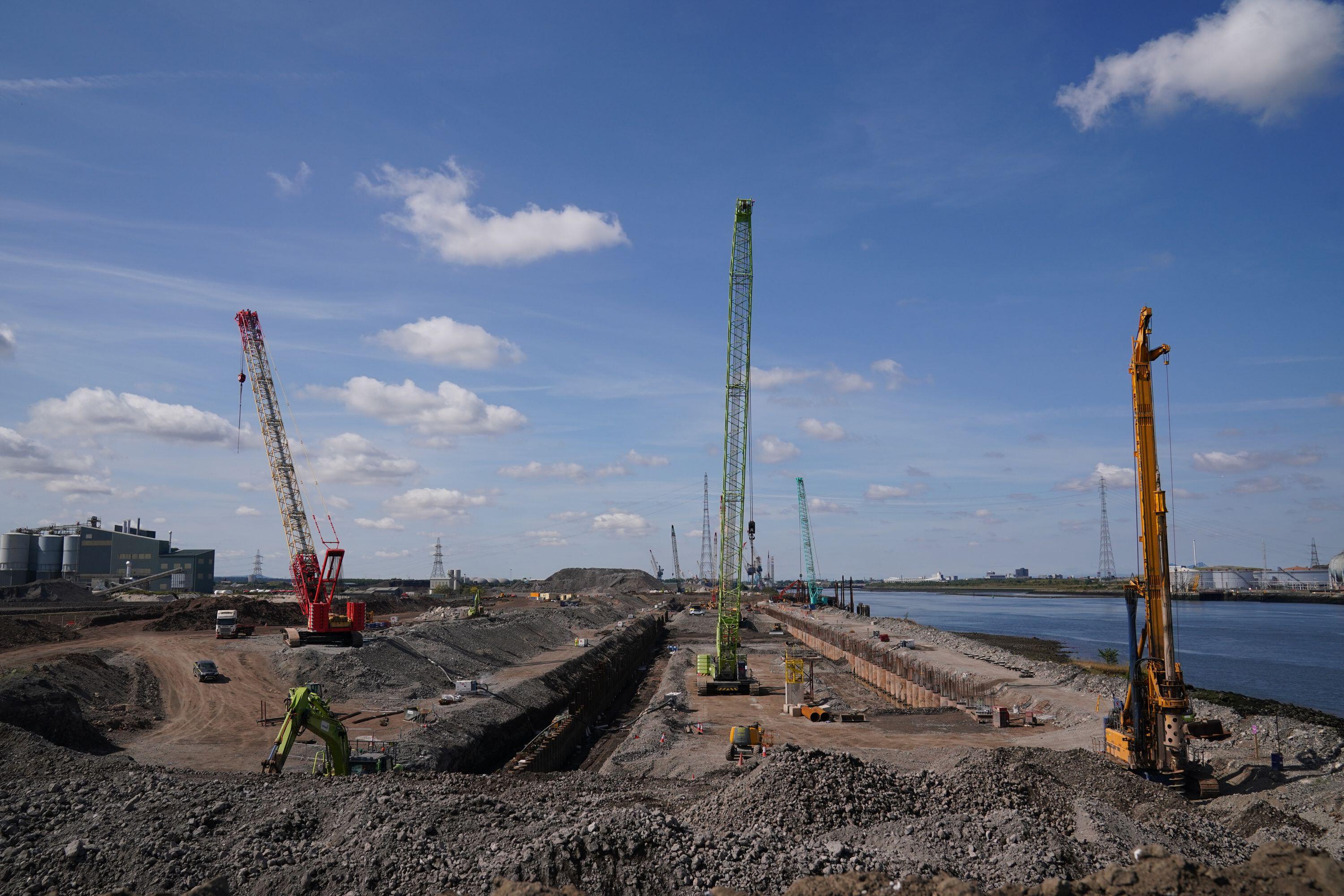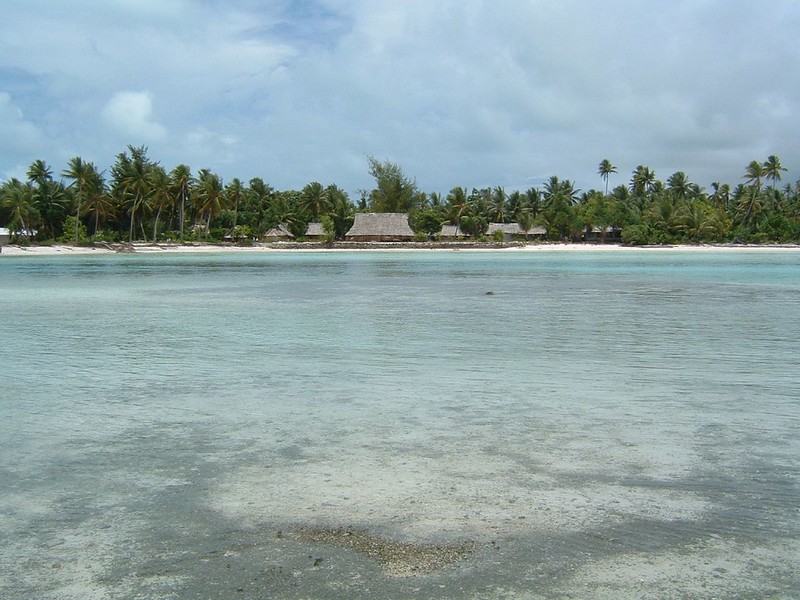Dead crabs may be tip of the iceberg with development at Teesside Freeport
More questions than answers remain about the cause of the so-called mass crustacean mortality event in Teesside - and there are fears about what this could mean for the future.
It began with a bang. At least, that’s what Joe Redfern would tell you. Late in the evening of 19 September, 2021 in Teesside, a massive explosion felled the Dorman Long tower, a mid-century building that once stored coal in the town known for its chemical industry.
Five days later, locals spotted the Orca. The maintenance dredger was enlisted to move sediment newly created from the blast into the ocean over a 10-day period.
Five days after that, the bodies started to appear. Crabs and lobsters washed up dead on the beach; in some places, they were waist deep. If they weren’t dead, they were likely twitching. The mass crustacean mortality event, as it would soon be called, killed thousands of crustaceans along 70km of coastline.
Conflicting reports would bring up multiple possibilities for the cause of the washup, fuelling a political battle between environmental protections and fishermen’s welfare on one side, and development at the Teesside freeport — of which the Dorman Long demolition was a part — on the other. But two researchers say this goes far beyond the crustacean event, and that the Tees Valley mayor’s ambitious projects may be putting even more at risk.
At the centre of the advocacy is the fishermen. The crustacean mortality had an outsized impact on the fishermen on the North East coast; virtually overnight, the catch they relied on for income was gone. But when they asked for help, it was clear that it wasn’t coming.
“We were going through the impacts of the mass mortalities and we were reaching out to government agencies for support, and it was clear that they weren’t going to offer us any support,” Joe Redfern, a marine biologist and former fisherman who manages the Whitby Lobster Hatchery, told The Teesside Lead. After Tees Valley mayor Ben Houchen called for financial support for fishermen in January 2023, it was denied, and DEFRA told The Northern Echo, "There are not currently plans in place to give compensation." They confirmed to The Teesside Lead this week that this is still the case
Redfern decided to take action on his own. Shortly after the washups, Redfern founded the North East Fishing Collective, a group that he says comprises nine different fishing associations and around 60 members. Together, they’re advocating for support for the fishing population and supporting research to uncover the cause of the washup.
The research is ongoing. But as we learn more about the possible ramifications of development in Teesside, some scientists fear that the worst is yet to come.
Conflicting reports
October 2021 was just the beginning. By spring 2022, crabs and lobsters once again littered beaches as washups continued. By that time, two scientific reports had been released: one, by DEFRA, attributed the mortality to algae blooms. Another, by marine pollution consultant Tim Deere-Jones and commissioned by the Whitby Commercial Fishing Association, denied that algae was the cause and noted high levels of pyridine — a toxic chemical found in coal tar — that the Environmental Agency had found in dead crustacean tissue samples.
The original report blaming an algae bloom was mysterious to John Bothwell, an associate professor at Durham University who studies algae. Bothwell says that the time and place of the bloom didn’t “make sense” and that deadly blooms are rare. When they do happen, he says, they tend to kill everything, not just one or two species.
Redfern wanted answers. He approached Gary Caldwell, a senior lecturer in applied marine biology at Newcastle University, to investigate further. In an unpublished, meaning that it has not yet been formally published by Newcastle University, paper released in October 2022, Caldwell argued that pyridine is extremely toxic at the levels that were originally found in the crab tissue samples. More specifically, he says the maintenance dredger Orca was responsible for the die-offs by collecting hundreds of tons of heavily contaminated coal tar from the Dorman Long tower explosions and dumping it into the sea.
Soon after Caldwell’s research was released, the House of Commons stepped in, calling for an independent investigation into the cause of the mortality event. Convened by DEFRA, the Crustacean Mortality Expert Panel (CMEP) was formed in December 2022; two months later, its report was released. The results left the public with more questions than answers: The CMEP found that the die-offs were “unlikely” to have been caused by an algae bloom, “very unlikely” to have been caused by a toxic pollutant, and “very unlikely” to have been caused by maintenance dredging. The only possibility that they deemed “about as likely as not” to have killed the crabs was a “novel pathogen.”
Caldwell’s rebuttal was swift — he maintained that pyridine was overlooked as the culprit. Redfern argues that the January 2023 report ignored key bits of evidence. “It’s jumping too fast to conclusions. It wasn’t helpful,” he says. “It didn’t support the fishermen, it didn’t support what happened along the coast, and it wasn’t properly investigated.”

Dredger, Heortnesse, dredging the Tees estuary at Teesmouth
Mark Fitzsimons defends the report. Fitzsimons, a professor of environmental chemistry at the University of Plymouth, was invited by DEFRA to participate in the CMEP. He says that the method used to measure pyridine in dead crabs at the beginning of the washups — the basis for Deere-Jones’ and Caldwell’s research — wasn’t validated. When the samples were retested using a new method in a report released in November 2023, he says, they had low levels of pyridine present. Even if the levels had been higher, he says, the amount that would need to be released and present in seawater was “unfeasible.”
“The science has demonstrated clearly that pyridine cannot credibly have been the cause of the event,” he tells The Teesside Lead, denying that dredging played a role. (Deere-Jones, meanwhile, says, “No scientific evidence has been provided in support of the DEFRA claim of ‘unfeasible,’” and says the initial testing “was based on long established existing procedures for chemicals of concern, but of course not pyridine specific…In effect the new test is not much more likely to be any more ‘validated’ than the earlier test, even though it has generated more favourable outcomes for DEFRA than the first.”)
For their part, Redfern and Caldwell welcomed the November report. “If you actually read what they’ve written, they’re not disputing pyridine at all,” Caldwell says, “Just that pyridine as a single chemical wasn’t the cause.”
Following the release of the report, he noted that the low levels could be due to the degradation of the chemical, and that pyridine doesn’t even need to enter the crab or lobster to be toxic. “Even so, it’s important to state that some of the pyridine levels they detected do fall within the toxic range against crabs,” he wrote.
Bothwell offers a third possibility. He says we don’t know enough about pyridine to rule it in or out, and that a variety of pollutants and/or disease could have caused the event, taking advantage of an already stressed ecosystem. A combination of factors could be at play. “If I had to bet, that would be my bet,” he says.
A crustacean coverup?
As government reports continue to point toward anything but pyridine as a cause of the washups, suspicions remain that the dangers that dredging poses to the environment and the fishermen’s livelihoods are being overlooked for the sake of economic development in the area. A month after the first washups, the government designated Teesside a freeport as part of their post-Brexit plan for building up the area. The plan is to develop 4,500 acres of land on the River Tees and create thousands of jobs.
But Tees Valley Mayor Ben Houchen is rushing the projects, Redfern says, at the expense of the environment and the fishermen .Houchen denies that any dredging or Freeport work caused the mass die-offs, and called claims that pyridine is the cause “conspiratorial”.
“All of those concerns get trumped by the political agenda of driving forward the Tees Freeport, making sure it succeeds,” Caldwell says.

Tees Valley Mayor, Ben Houchen shows Helen Whately, around the Teesworks site. Credit: Sopa Images
Cutting corners on environmental precautions means streamlining, and shortening, the construction process. This has led some to question the findings of government reports, and in August 2022, openDemocracy published a report alleging that politicians pressured researchers to rule out dredging as a potential cause. Fitzsimons says he never felt pressure from either side of the issue during his investigation.
Ben Houchen did not respond to The Teesside Lead’s request for comment.
On the other side of the political spectrum, Alex Cunningham, Labour MP for Stockton North, has been advocating for the fishermen since the first washup in October 2021. He’s made repeated calls to Mark Spencer, Minister of State at DEFRA to continue looking for answers to the mortality event, describing a lack of transparency from government officials.
“They keep coming up with different theories, but no answers,” Cunningham tells The Teesside Lead. “They've managed to tell us what hasn’t been the cause of the die-off, but nobody’s ever been able to tell us what is the cause.”
Cunningham also wants to see continued monitoring of the area, fishermen compensated, and further investigation of whether the situation is improving. (As of September 2022, Spencer blamed the algae bloom for the mortality event; in February 2023, he stated it was likely a pathogen.)
“I don’t think there’s anything natural about what’s happened,” Cunningham says. “I think they’ve gotten to the point now where they’re hoping it will just go away. But the issue for us is that the sea is still in very poor condition. The fishermen are not catching anything in that area.”
The tip of the iceberg
Caldwell says the situation could get even more dire. Due to the history of Teesside as an industrial site, the work being done in the area, he says, carries great risk of adding countless pollutants—like naphthalene, for example—to the environment, including some that could be harmful to humans. At the moment, he’s working on testing the area’s marine life for heavy metals, as well as other chemicals that can find their way into the food chain and make people ill.
“There’s everything under the sun in there, including radioactive materials,” Caldwell says. “Unlike pyridine … these other pollutants, they stick around for years, hundreds of years in some cases.”
Still, dredging continues. In January 2023, Teesside developers enlisted Athena, a capital dredger, to make way for an offshore wind turbine factory. Unlike Orca, a maintenance dredger that keeps channels clear of sediment for boats to pass through, a capital dredger digs deeper into the seafloor to create new space.

A view of the construction site at Teesside Freeport, Teesworks, in Redcar, in 2022
“It cut back a million and a half tons of sediment from the river bank,” Caldwell says, and dumped it miles offshore. “That sediment that the capital dredger took out is amongst the most polluted sediment in the country, never mind just the region.” Bothwell says pollutants are “generally below what are regarded to be safe levels” in Tees sediments, but notes that safe levels are calculated for each chemical in isolation; he worries about what happens when they interact with each other, calling it a “cocktail effect.”
Houchen, meanwhile, says the project will create thousands of jobs. He also told the Northern Echo, “we waited for the science to show that what we were doing was safe, was to the appropriate environmental standards and now today that means we can get on and we can continue to finish the project that we’re delivering.” He says the dredging is being done “to the highest environmental standards.”
Caldwell isn’t convinced.
“It’s either going to be something that a considerable amount of money is invested to clean it up, or the community is going to have to live with it and just deal with whatever consequences in terms of long-term health,” he says.
Fishermen still struggle
In the meantime, washups have subsided, Redfern says. But that doesn’t mean the ecosystem has bounced back. Fishermen, he says, are seeing an increase in the presence of scavenger species cleaning up after the death event. “It’s just exploded in number because there’s no predators there,” he says, calling the die-offs a “shock” to the ecosystem.
And workers are still struggling to recover. “Lobster numbers seem to be doing pretty well, but crab catches are quite down,” Redfern says. “It’s difficult for fishers in the area.” Caldwell says lobsters are more successful because they’re migrants to the area, not locals like crabs. He says it may take years, or even a decade, for the ecosystem to stabilize.
As development continues, and with the potential for it to cause havoc for the environment and the human population, the pyridine almost becomes a moot point. It’s the unknown that’s scarier.
“There’s too much stuff that’s been dumped in the North Sea for a few hundred years,” Bothwell says, noting that the ecosystem is incredibly stressed and needs to be monitored and restored. “What is happening to Teesside is likely to happen to other places around the North Sea … If we don’t figure out what’s happening and if we don’t figure out how to stop it from happening and how to actually restore those ecosystems, then we’re in real trouble.”
A Defra spokesperson told The Teesside Lead: “We have completed extensive investigations into the cause of crustacean mortality in the North East, and have drawn on an independent expert panel to review findings and offer further analysis.
“The independent panel reported in January 2023 that they were unable to identify a clear and convincing single cause for the unusual crustacean mortality. They concluded that it was as likely as not that the cause was a novel disease or pathogen and we are continuing to monitor stock reports to assess the impacts of the incident.”
The Teesside Lead is now on Substack.
Become a Member, and get our most groundbreaking content first. Become a Founder, and join the newsroom’s internal conversation - meet the writers, the editors and more.





